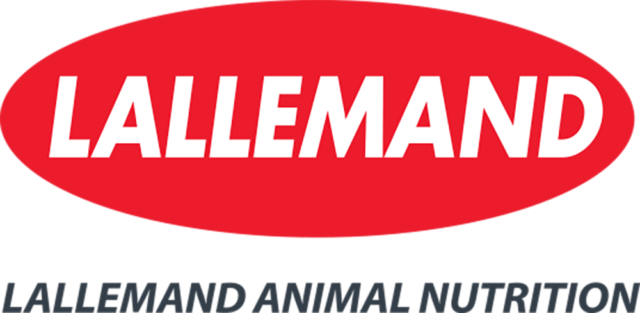Rising feed and transportation costs have dairy farmers looking for ways to save on raising replacement heifers. A free spreadsheet planning tool called the Heifer Grazing Compass allows farmers to evaluate whether their operation can reduce cost and labor needs by creating a rotational grazing program.
The compass was developed as part of the Grassland 2.0 project for the University of Wisconsin by Brad Barham, John Hendrickson, Connor Mulholland and Jim Munsch.
Munsch says that while putting the tool together, they worked with several large dairies in Wisconsin that were either raising their heifers themselves in confinement or having them custom raised in the Great Plains, and the economic benefits to raising their own heifers with rotational grazing was significant.
“The operators of these farms were astonished how much they could save on pasture – it’s like one-half or one-third,” he says.
Adam Abel, Wisconsin NRCS state grazing specialist, says a grazing system generally required much less labor compared to confinement options.
Because every operation has a different mix of economic considerations, labor needs and access, land access and other variables, the spreadsheet tool offers a good way to see how and if heifer grazing could offer benefits.
Details on the tool
The compass consists of seven Excel sheet pages, with each one building on the information entered in previous pages, and data is automatically carried forward when entered.
It starts with a user guide – and the second tab, titled “Pasture-Heifer Balance,” looks at whether the dairy’s available acreage can support the number of heifers needed for replacements using the online Web Soil Survey to assess the productivity of soil types and acreage size. There’s a Wisconsin-only app for pasture production estimates, but Munsch says local NRCS offices can provide similar information if desired.
If the acreage is not sufficient to produce the dry matter needed, the spreadsheet suggests a number of solutions – decrease the number of replacements, decrease the average daily gain (ADG) goal, move the heifers to new paddocks more often (which increases forage productivity on the same acreage) or add more land to the grazing plan.
The third tab, “Pasture Feeding Plan,” assesses whether pasture alone can meet the nutrient needs of the heifer group. Munsch says in general, grain supplementation isn’t necessary for heifers, but the option is there if it’s needed for a specific situation.
Next, with “Pasture Set-up and Operating Cost,” the start-up costs of things like fencing supplies and forage seeding are accounted for as well as the ongoing operating costs and labor requirements. This offers a big picture of what a rotational grazing heifer program would require. Munsch recommends working with the local extension or other grazing-knowledgeable resources if this is an unfamiliar area.
The fifth tab, “Existing Heifer Raising,” is where operators can enter their current heifer-raising costs, whether they raise their own or hire them raised on contract.
“Financial Analysis” compares costs of a grazing system with current system costs in numbers like dollars per head per day and labor hours per day. The final page, “Compressed Data,” has easy-to-access summaries of the most pertinent data from the whole sheet.
Weighing pros and cons
Since every operation is different, going through the farm’s unique numbers in the tool will help with making a sound business decision that works best for the individual situation.
While some operations can see major savings from implementing a grazing program for heifers, Abel says not all dairies will find grazing a good fit for a number of reasons, like requiring the acres to spread manure on, having limited access to large enough fields or having a dry matter deficit.
He recommends operations assess their own needs and see if rotational grazing might be a fit in their case with their own opportunities and limitations. In general, he sees the grazing option offers many dairies a large savings that improves the whole operation.
“It’s a business decision that can absolutely benefit the bottom line and support your operation,” Abel says.
Even if there isn’t land or labor available for the dairy itself to implement a grazing program, Munsch says there are more local farmers offering custom grazing services that usually offer significant savings over other options like confinement raising.
He explains since pasture provides a source of feed, a place to feed, no storage or harvesting costs, no manure handling and low to no fertilization needed, rotational grazing is usually an economic benefit, even if paying someone else to do it.
While grazing is simplest in the growing season, Munsch says there are opportunities to reduce stored feed and housing needs over the winter through stockpile grazing or bale grazing, depending on the situation. Custom graziers usually just graze over the growing season, although some may be set up to offer year-round heifer-raising services.
While direct economic benefits are usually the main reason dairy farmers choose a grazing heifer program, Abel says there are animal health benefits that add to the bottom line as well. He explains that several research studies have found well-managed rotationally grazed heifers have fewer incidences of twisted stomachs and milk fever once they freshen, and they are in better condition and not overfat. Dairy farmers comment how they like the way the heifers look and how aggressive the animals are at the bunk.
Abel has seen a recent UW – Madison research brief suggesting increased milk production in the first lactation in grazed heifers compared to confinement, and he is interested to see what further research finds.
For more information about the Heifer Grazing Compass and to download it for free, visit Grassland The Heifer Grazing Compass. Grassland 2.0 has a YouTube page that offers video walk-throughs for using the compass tool.






